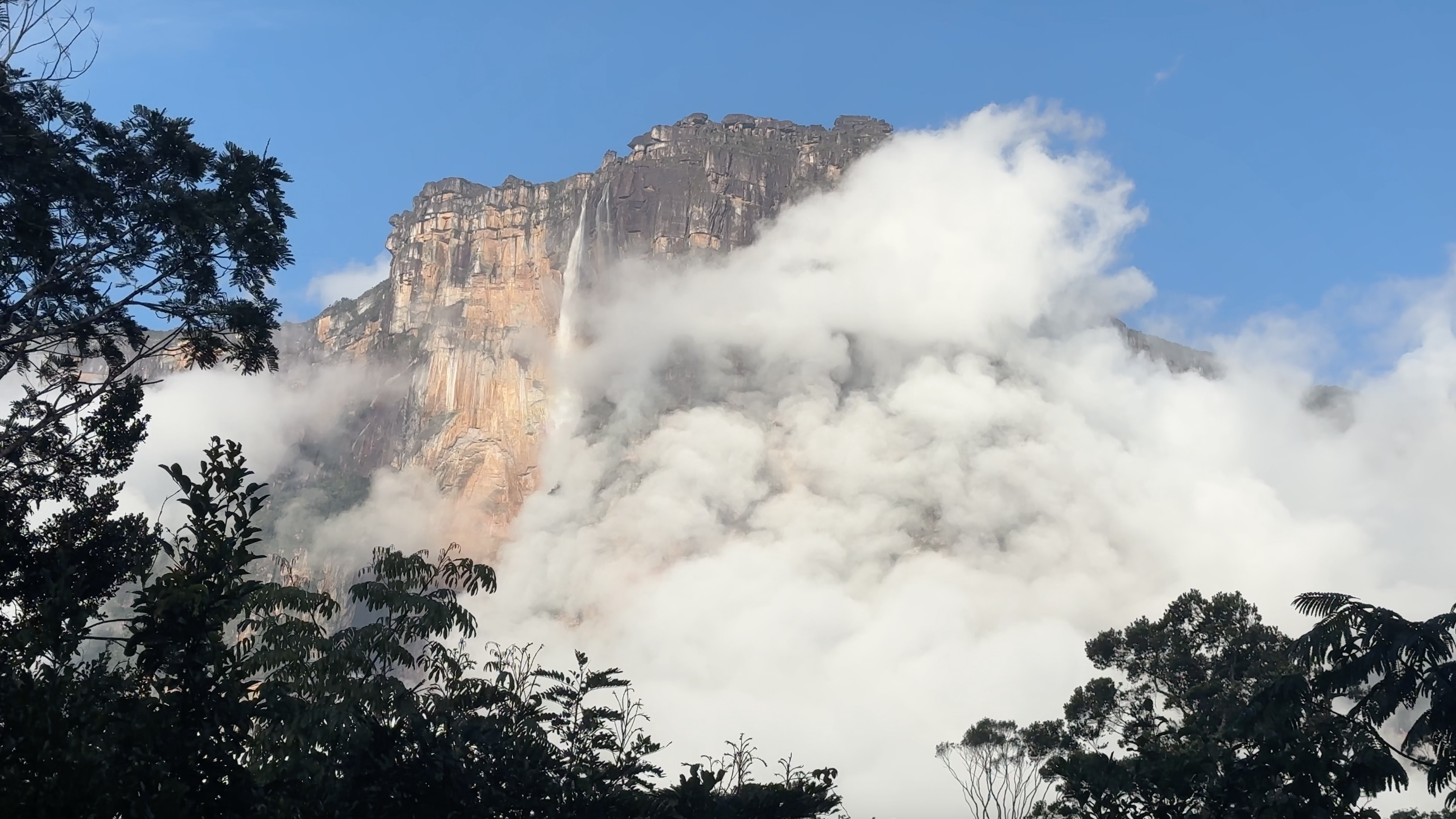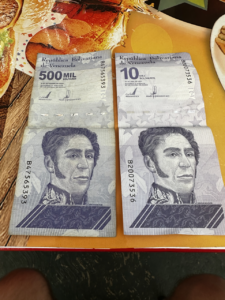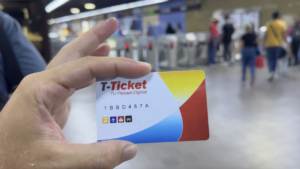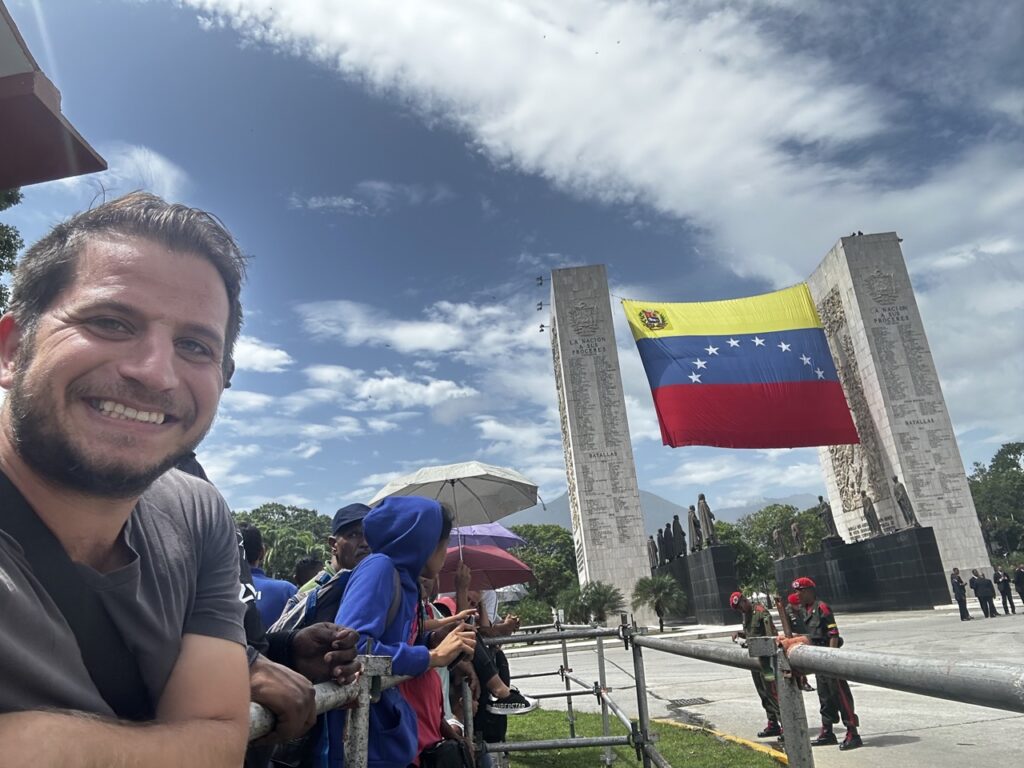
Venezuela is a challenging destination to visit, but definitely worth it! Here is how I overcame 5 major problems for an unforgettable Venezuela travel experience!
We’ll start with one of those problems that only exist in Venezuela, there is no cash… kind of. The official currency is the Bolivar but after years of hyperinflation it is used sparingly, most transactions nowadays are performed in dollars. Unfortunately, ATMs don’t allow you to withdraw dollars, only a small amount of bolivares (worth about 10$), and the commission fee is heavy. But Venezuelans adapted and now almost every business accepts credit card payments, even a one-dollar hot dog in the street! So pay with your card wherever possible.

Unfortunately, there are often problems with credit card payments, and in some places, there are no credit card payment points, like Canaima National Park, or some of the hotels on Margarita Island. Therefore it is very important to bring a good amount of dollars with you for emergency cases, 200$ a week for a budget traveler is the minimum! You should then make some payments in cash and receive Bolivares in change. This will help you pay for small things like bus rides or coffee from street vendors. So try to always have a few Bolivares on you.
Make sure to familiarize yourself with the up-to-date bills as old ones are worthless and the values can be confusing. For example when I was traveling 500,000 was worth less than 1 million, which was less than 5. Confusing right? They deleted the zeroes once the currency hit 1 million. So pay attention!
What happens if you don’t bring enough dollars and run out? Here are several options:
The hotel where many foreign businessmen and diplomats stay. You make a credit card payment and receive cash in dollars. The commission is based on how much cash they have available, usually it’s around 3% but it can be higher or lower.

Many Venezuelans use the U.S. transfer app Zelle, especially those dealing with tourists, as there is a service that opens a U.S. bank account for them without U.S. documents, so they can use Zelle. I found someone who was willing to give me a 100$ dollar bill when I was in a jam in exchange for a Zelle transfer, a real lifesaver at the time.
The same process can be done with Cryptocurrencies. A friend of mine exchanged 50 USTD with a cab driver once, so this option will sometimes present itself.
Venezuela travel with public transport is a pain. Here’s why:
Between cities, police and army checkpoints will sometimes stop busses and order all the passengers to get off, and there is a chance they will harass you to try to extort a bribe. This is far less of a problem than it was a few years ago, but it is still, something that can happen so it’s good to be prepared. This is more common in remoter areas or near the border, like in the states of Tachira and Zulia adjacent to Colombia.
If you choose to take a flight, the online system does not work for most airlines, so you need to go to one of their offices and buy the ticket there. Then they require you to arrive 3 hours before takeoff, although 2 hours should suffice, especially for internal flights.
What about inside the cities? Taxis are very expensive in Venezuela and should be avoided. If you want the convenience of a taxi, it’s better to use the app Ridery, which is the Venezuelan version of Uber. You can download it here: https://web.ridery.app/
An option that is always available is the bus. They tend to be crowded and without air conditioning, but they are cheap and get you from place to place. Just make sure to bring small change, preferably in Bolivares, to pay for the ride.

Finally, in Caracas there is an excellent metro that will get you from place to place for cheap, the only problem is, how to pay? you need to buy a rechargeable card at one of the counters, but sometimes they won’t accept cash or credit cards, only debit! I was stuck and had no way of paying. If this happens, you can walk up to the usher and kindly ask to be let through. They will always agree, eventually. It can become a very tiresome process, but hey, free metro!
For a SIM card go to a shop of the phone company Digitel, they are almost everywhere. The card plus coverage costs 15$, the problem is the package runs out very quickly, and the Digitel shops don’t sell you more data, only a new card (stupid I know). Instead, you have many kiosks where they sell more internet coverage, for between 1 to 20 dollars. They also charge 40 bolivares (around 1.33$) for the service so you may as well fill up a decent amount.
As for Wifi, it is problematic in Venezuela. It can come and go, and even when working, will often be quite slow. The better the area and more expensive the accommodation, the more likely you will experience good Wifi. So be prepared.
Venezuela has problems with its power grid leading to sporadic cuts of both electricity and water. This is a nightmare for digital nomads when the power goes just when you have that important Skype call!
There isn’t that much you can do about it besides be prepared:
First of all the problem gets worse the more remote areas you go to. Caracas has almost no blackouts for instance.
Secondly, in more problematic areas there are often restaurants or cafes that have a generator, so they are immune to blackouts. They can be expensive, but if you can’t afford to get disconnected you can go there.
This isn’t a unique problem to Venezuela as there are more expensive countries out there, it’s just frustrating that everything is so expensive when the people make so little money. A McDonald’s meal can cost more than someone’s monthly salary! A short taxi trip, 10$. Laundry, 10$ (how?!) and so forth. Just don’t get frustrated with how little sense it makes and find the loopholes where you can.
Some street food is very cheap:
Hot dogs and hamburgers can go for as little as 1$ ( and as much as 7-8$, you have to look)
A small cup of coffee on the street is 0.50$
Chicha, the local drink, is 1$
A couple of Tequenos (a cheese-filled pastry) with juice for 1$ at a stand.
So there are options, but just be ready to spend a little bit more than some other South American countries.
Traveling to Venezuela may sound scary, and as this article illustrates, there are some unique challenges that need to be overcome. But the reality is that Venezuela travel isn’t nearly as dangerous as it sounds. With adequate preparation, common sense, and some basic Spanish, it is possible to set off on an incredible Venezuela travel adventure!

Is Venezuela open for travel?
Yes. Venezuela has functioning borders like any country, through which citizens and foreigners can enter, including tourists.
Where can I get a Venezuelan visa?
It is possible to apply for a visa at any Venezuelan embassy around the world, although many passport holders are eligible for a Visa on arrival (by flight only), such as citizens belonging to a European country that is part of the Schengen area.
Is it safe to travel to Venezuela in 2023?
It is difficult to give an absolute answer to such a question, but the situation in Venezuela has improved a lot in recent years. I personally felt safer in Caracas than in Medellin in neighboring Colombia. As long as you exercise basic caution, Venezuela is no more dangerous than other South American countries.